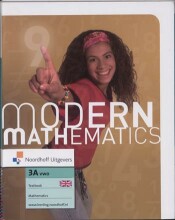Summary: Parliamentary Democracy
- This + 400k other summaries
- A unique study and practice tool
- Never study anything twice again
- Get the grades you hope for
- 100% sure, 100% understanding
Read the summary and the most important questions on Parliamentary democracy
-
1 What is politics?
This is a preview. There are 5 more flashcards available for chapter 1
Show more cards here -
What is the basic feature of each dictatorship?
The three powers- the legislative, executive and judicial power – cannot be separated and are in the hands of a small group of people. A dictatorship has no rule of law. -
What is a referendum?
A vote by the people on a particular government bill. -
What are the basic features of a representative democracy?
The people elect representatives who make the decisions and who quite regularly are held accountable by the people for their policies when elections are held. -
What are other features of a democracy?
-There is individual freedom.
-Basic political rights apply. There are free and secret elections where citizens themselves can elect those who govern them.
-The army and police have restricted powers.
-There is an independent judicial system.
-There is freedom of press. -
What is a parliamentary system?
The directly- elected parliament is the highest administrative organ in the country. The cabinet of ministers and secretaries of state is formed on the basis of the number of members from each party that have been elected to parliament. The cabinet has to continually account for its policies to parliament and therefore indirectly to the people. -
What happened since the constitution of 1848?
political power does not rest with the king but with parliament. -
When did the Netherlands become a fully-fledged democracy ( volwaardige democratie) with a parliamentary system?
With the introduction o general suffrage ( in 1917 for men and 1922 for women) -
Which two value are important for our consitution?
freedom and equality -
How are the values freedom and equality reflected in our constitution?
- The tasks and powers of the three political organs ( parliament, Council of State and Supreme Court) are clearly described in the constitution.
- All Dutch citizens from the age of eighteen have a right to vote and to put themselves up for election
- The rules for political decision-making are established.
- The media must be free from government interference. -
2 Political movements
This is a preview. There are 22 more flashcards available for chapter 2
Show more cards here -
What did the social situation of the Netherlands look like 160 years ago?
- hardly any government involvement in labour and healthcare
- great differences in income
- many lived in poverty and trade unions were banned
- no general suffrage, social services and insurances
- Higher grades + faster learning
- Never study anything twice
- 100% sure, 100% understanding




























